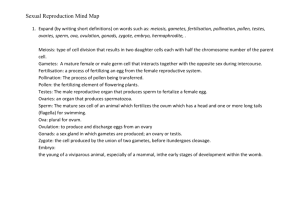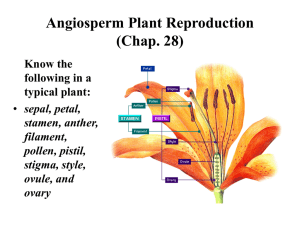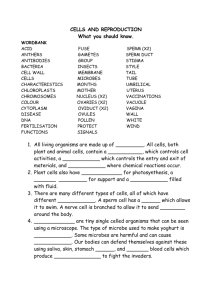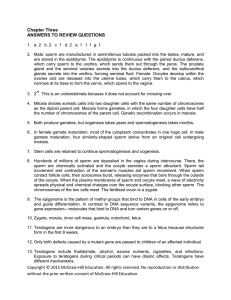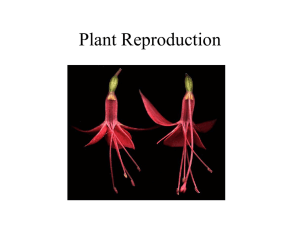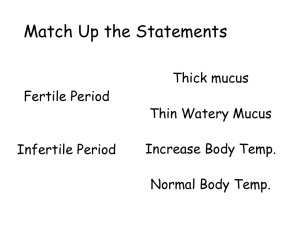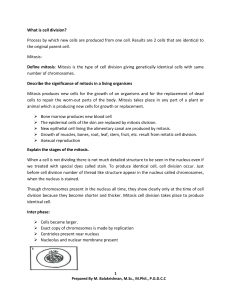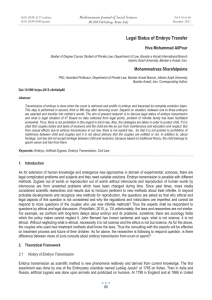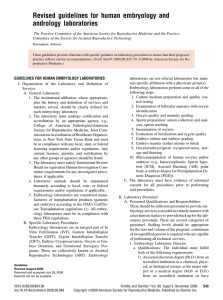S1 Cells Alive WYSK
advertisement
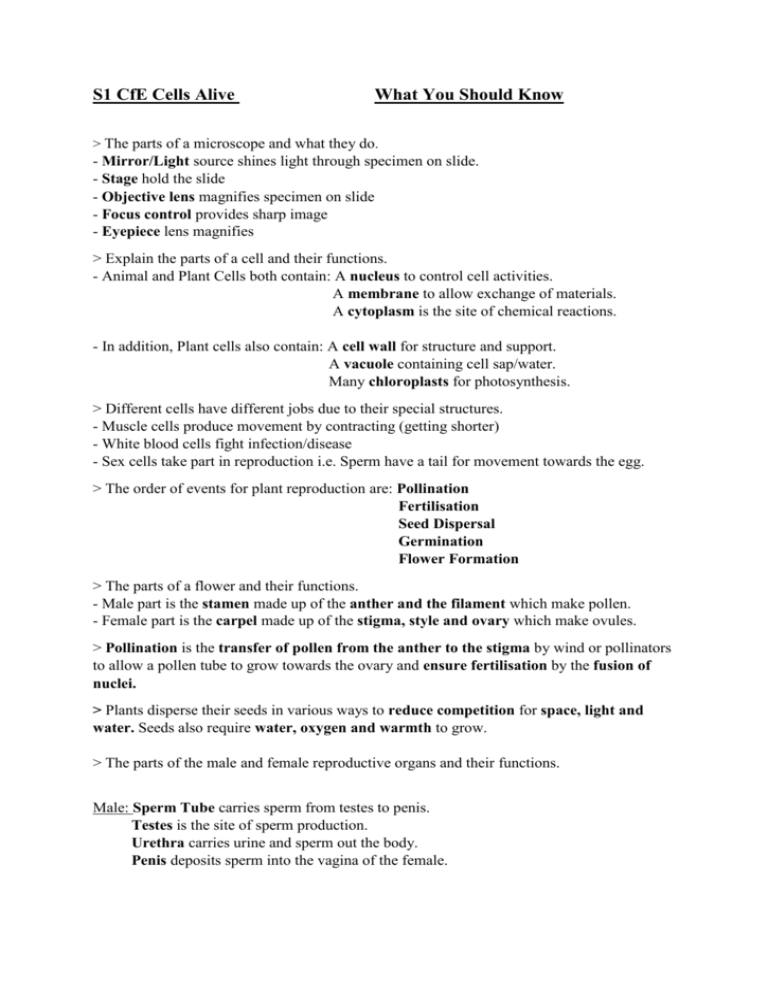
S1 CfE Cells Alive What You Should Know > The parts of a microscope and what they do. - Mirror/Light source shines light through specimen on slide. - Stage hold the slide - Objective lens magnifies specimen on slide - Focus control provides sharp image - Eyepiece lens magnifies > Explain the parts of a cell and their functions. - Animal and Plant Cells both contain: A nucleus to control cell activities. A membrane to allow exchange of materials. A cytoplasm is the site of chemical reactions. - In addition, Plant cells also contain: A cell wall for structure and support. A vacuole containing cell sap/water. Many chloroplasts for photosynthesis. > Different cells have different jobs due to their special structures. - Muscle cells produce movement by contracting (getting shorter) - White blood cells fight infection/disease - Sex cells take part in reproduction i.e. Sperm have a tail for movement towards the egg. > The order of events for plant reproduction are: Pollination Fertilisation Seed Dispersal Germination Flower Formation > The parts of a flower and their functions. - Male part is the stamen made up of the anther and the filament which make pollen. - Female part is the carpel made up of the stigma, style and ovary which make ovules. > Pollination is the transfer of pollen from the anther to the stigma by wind or pollinators to allow a pollen tube to grow towards the ovary and ensure fertilisation by the fusion of nuclei. > Plants disperse their seeds in various ways to reduce competition for space, light and water. Seeds also require water, oxygen and warmth to grow. > The parts of the male and female reproductive organs and their functions. Male: Sperm Tube carries sperm from testes to penis. Testes is the site of sperm production. Urethra carries urine and sperm out the body. Penis deposits sperm into the vagina of the female. Female: Ovary is the site of egg production. Oviduct is the site of fertilisation in mammals. Womb is the site of embryo development. Vagina is where sperm are deposited. > Embryo development occurs in the womb (uterus) over a period of 40 weeks. The embryo gets food and oxygen across the placenta, via the umbilical cord, from its mother’s blood. > Pregnant woman should avoid X-rays, alcohol, and drugs. > DNA is made up of chromosomes which contain genes that control our physical characteristics and genetics. i.e. eye colour, ability to roll your tongue etc. ½ of this DNA comes from your Mum and the other ½ your Dad. > Humans have 46 chromosomes arranged in pairs. The 23rd pair is the sex chromosomes. XX is a girl whilst XY is a boy. > DNA profiling is a technique used to identify criminals or for paternity testing using a few skin cells, hair root cells or from blood/saliva.
